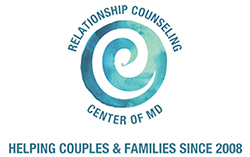
by Diamond Greene, MS, LGMFT
A blended family, also known as a stepfamily, is a family consisting of children from the current relationship and all previous relationships. About 1 in 6 children live in a blended family (Pew Research Center, 2015). Blended families come with a unique set of challenges as children may be used to a specific parenting style and family routine and must learn to adjust. It is also important to be aware that this can be a period of grief for children as they are dealing with the loss of the family that they knew. Furthermore, conflict between stepparents, biological parents, and ex-partners can also create stress, as well as conflict between children, stepparents, and stepsiblings.
Connection Before Correction: For stepparents, get to know your partner’s children. Stepparents can do this by setting aside a few minutes each week to dedicate to their stepchild. This time should be spent doing what the child wants, within reason, and the stepparent should avoid teaching or critiquing their stepchild during this time. If the stepchild is being disrespectful to the stepparent, avoid disciplining the child and let his or her biological parent do it. Parents should also spend special time with their biological children, as much of the parent’s focus will be on their new partner and joining the families together. Parents should encourage their children to maintain close relationships with both biological parents.
Traditions, Rituals, Routines: This is often a tough transition for children so it can be helpful to establish new traditions and rituals for the blended family, such as a weekly game night or family dinner. This shows children that they are part of a new, stable family unit. Children require stability and predictability, but with so many changes already taking place, such as moving into a new home, adjusting to living with new people, and likely seeing one biological parent significantly less, this can seem impossible. House rules can help to establish some sort of routine (i.e. chores, bedtime, homework, discipline, and rewards).
Respect, Empathy, Communication: Respect for everyone involved is essential and respectful communication should be emphasized as a standard. For example, parents should not talk badly about ex-partners to their children and children should show respect for stepparents and stepsiblings. It is likely that everyone will not like one another at first and arguments will happen, but families must learn to communicate effectively with one another and discuss solutions, while still considering everyone’s feelings. This will require empathy for and from all parties, as it is not easy to bring two families together.
This can be a very difficult time for both parents and children, so listening to one another and providing support is important. Families may seek family therapy, as this can help with building communication and conflict resolution skills.


